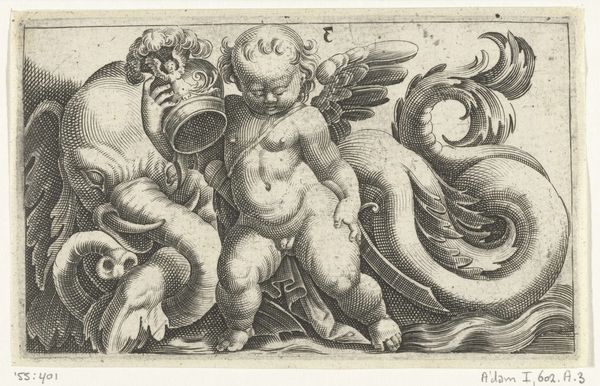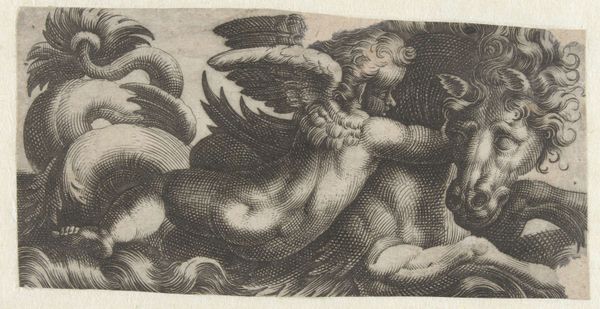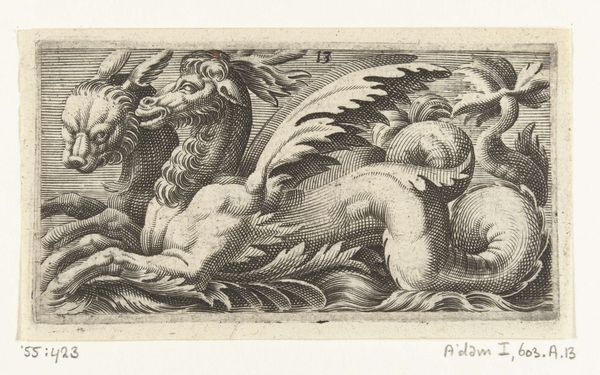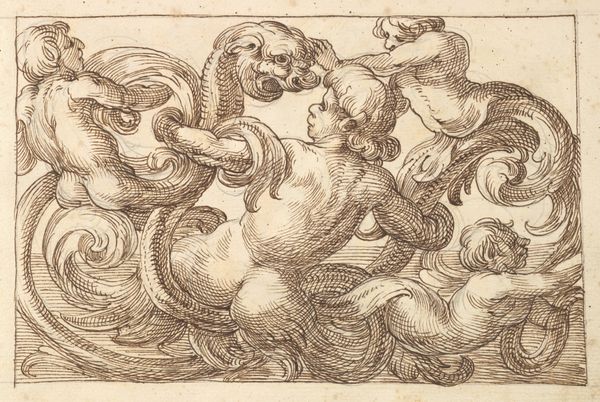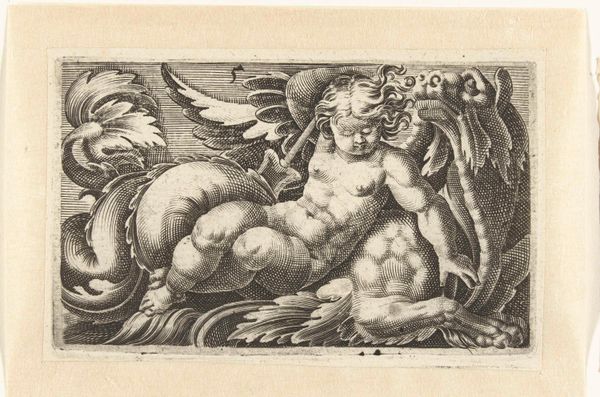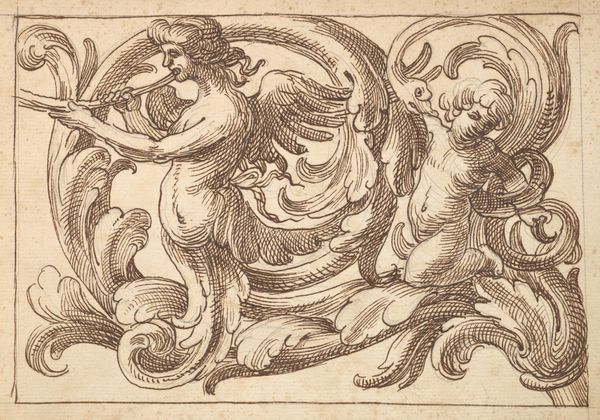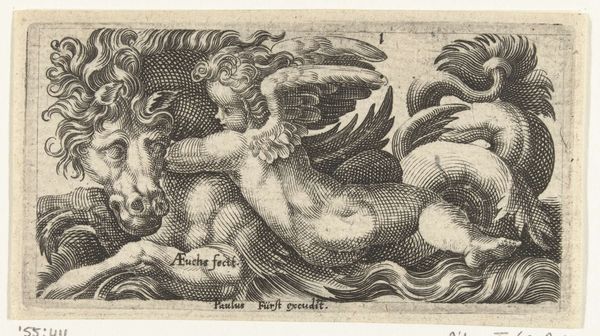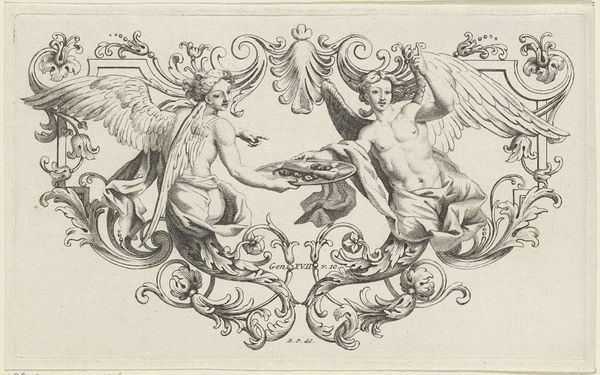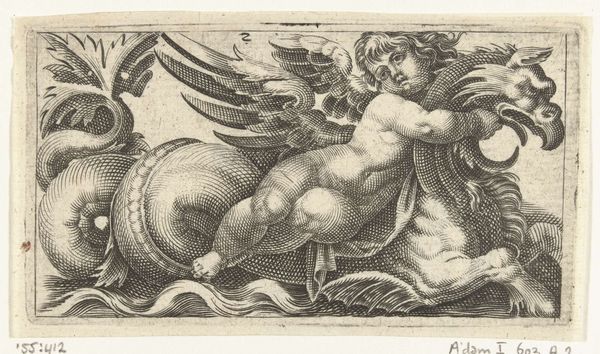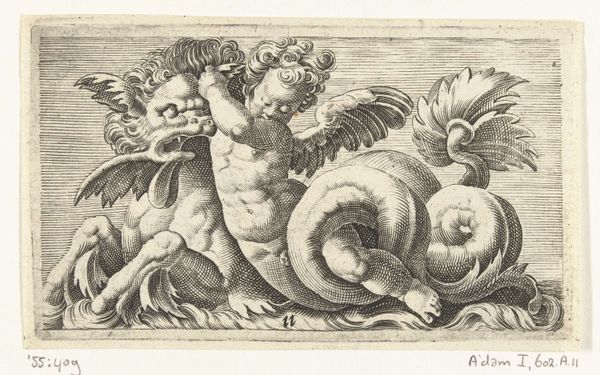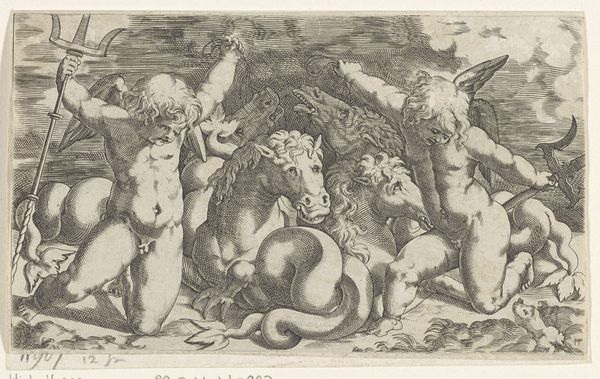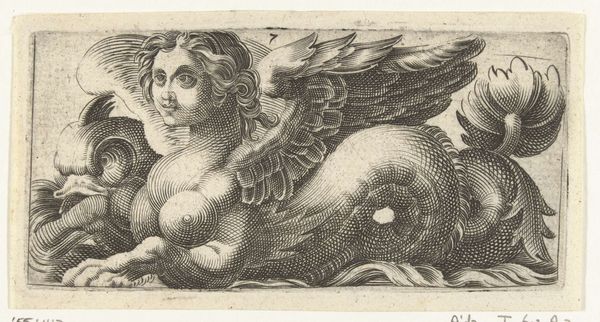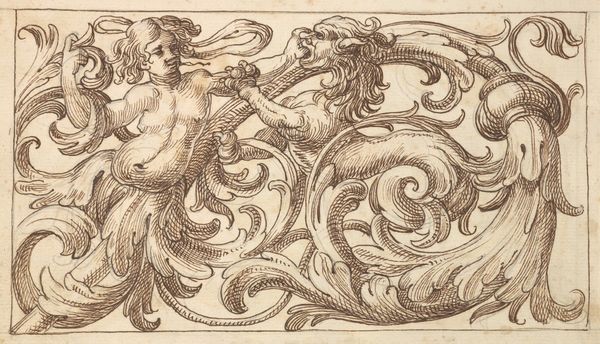
print, engraving
# print
#
figuration
#
form
#
11_renaissance
#
history-painting
#
engraving
Dimensions: height 27 mm, width 80 mm
Copyright: Rijks Museum: Open Domain
This is a 16th-century engraving by Barthel Beham depicting putti and a sea horse. The putto, a cherubic figure, isn't merely decorative; it's a symbol deeply rooted in antiquity. We see these figures frolicking, embodying the pagan spirit, and the unbridled energy of classical art. The sea horse is an interesting hybrid. It reminds me of the creatures in ancient Roman mosaics, where aquatic beings symbolized dominion over the seas, but also chaos and the unknown. We often see this pairing of human-like children with sea creatures reappearing in Renaissance art. The continuous frieze hints at a cycle, a procession. The motif evokes the Dionysian revels of antiquity—a release of inhibitions, a dance of life, death, and rebirth. This engraving is not just an image; it’s a conduit to the past, echoing through centuries, evoking our collective memory, and reminding us of the enduring power of symbols.
Comments
No comments
Be the first to comment and join the conversation on the ultimate creative platform.
